Posted: October 7, 2024 | Author: Jasmin Buijs | Filed under: Advertising, alternative protein, Authors, clean meat, cultivated meat, Food, Information |
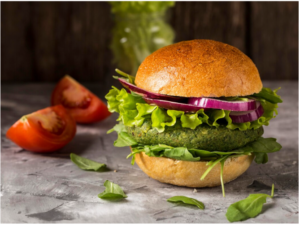 On 4 October 2024, the European Court of Justice (ECJ) provided its judgement in the case C-438/23 on the question whether the French national Decree limiting the use of meaty names for plant-based products is in compliance with the Food Information to Consumers Regulation (FIC Regulation). A month earlier, Advocate General (AG) Capeta rendered her opinion in this case, which we analyzed in this blogpost. While this opinion was not very promising for plant-based meat companies, the ECJ did not follow the AG and ruled that no meaty names ban can be implemented at national level. In this blogpost, we explain why, and what this all means for the alternative protein sector. For more background on the French Decree and the preliminary ruling by the ECJ, we refer to our previous blogpost on this topic.
On 4 October 2024, the European Court of Justice (ECJ) provided its judgement in the case C-438/23 on the question whether the French national Decree limiting the use of meaty names for plant-based products is in compliance with the Food Information to Consumers Regulation (FIC Regulation). A month earlier, Advocate General (AG) Capeta rendered her opinion in this case, which we analyzed in this blogpost. While this opinion was not very promising for plant-based meat companies, the ECJ did not follow the AG and ruled that no meaty names ban can be implemented at national level. In this blogpost, we explain why, and what this all means for the alternative protein sector. For more background on the French Decree and the preliminary ruling by the ECJ, we refer to our previous blogpost on this topic.
Legal names can be set, but the French Decree does not contain legal names
The ECJ starts the motivation of its decision with acknowledging that the FIC Regulation leaves room to adopt legal names at Member State level where such do not exist at EU level. Where legal names are set, these cannot be used for products not complying with the specifications of that name. As an example, the ECJ refers to the term ‘meat’, which is legally defined as ‘the edible parts of animals’. A food not containing such parts can therefore not use the name ‘meat’, even if it is accompanied by specifying terms such as ‘vegetarian’. The same applies to milk and certain milk products, for which the legal name is laid down in the COM Regulation. Indeed, as we know well from the Tofutown decision, names such as ‘plant-based milk’ are a no-go.
According to AG Capeta, the French Decree under attack established legal names. This was done on the one hand by establishing a list of meaty names of which the use is prohibited for the designation of their plant-based counterpart (such as steak), and on the other hand by authorizing the use of certain meaty names for foods containing vegetable proteins provided that they do not exceed a certain proportion (such as cordon bleu (maximum 3,5 % vegetable protein)).
The ECJ ruled however differently. In the first place, it recalls that the French authorities themselves rejected the hypothesis that Decree No 2022-947 lays down a legal name. Therefore, the learnings from the Tofutown decision cannot be applied to the case at hand. In the second place, it also states that legal names must, according to the definition thereof in the FIC Regulation, be defined in order to designate a foodstuff. The adoption of a legal name thus means associating a specific expression with a given food. This is done by setting certain conditions, especially with regard to the composition of the food. The French Decree contains a measure prohibiting the use of certain meaty names, which are not legally defined by the Decree, for plant-based foods. This is not the same.
Use of customary and descriptive names fully harmonized
Given that there are no legal names for plant-based foods at EU level and neither in France as far as is known to the ECJ based on the file of the case, plant-based foods must be indicated by their customary name or descriptive name. Where a customary name is the accepted name of the food that does not need further explanation, a descriptive name must explain the main characteristics of the food.
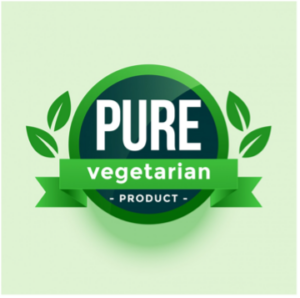 Obviously, Member States cannot prevent plant-based food companies from complying with their obligation under the FIC Regulation to indicate the name of their products by using customary or descriptive names where no legal name exists. Having said that, customary and descriptive names must of course comply with the FIC Regulation and therefore not be misleading in the meaning of art. 7 thereof. As the ECJ indicates, consumers are not easily misled where the substitution of a component or ingredient of a (in this case animal-derived) food is clearly indicated in accordance with art. 7(1)(d) of, and Annex VI, Part A, point 4, to the FIC Regulation. The ECJ motivates that this set of rules also covers the situation where the composition of the food changes completely because the respective component or ingredient constitutes the only component or ingredient of the food (as is the case for e.g. a vegetarian steak). The ECJ therefore concludes that the protection of consumers from the risk of being misled by the use of meaty customary or descriptive names for foods that are fully or partly plant-based is fully harmonized by the FIC Regulation. Therefore, Member State cannot enact national measures regulating or prohibiting the use of such meaty names. The ECJ specifies that this includes that Member States cannot establish maximum permitted levels of vegetable proteins that can be contained in foods to be designated by meaty customary or descriptive names, either.
Obviously, Member States cannot prevent plant-based food companies from complying with their obligation under the FIC Regulation to indicate the name of their products by using customary or descriptive names where no legal name exists. Having said that, customary and descriptive names must of course comply with the FIC Regulation and therefore not be misleading in the meaning of art. 7 thereof. As the ECJ indicates, consumers are not easily misled where the substitution of a component or ingredient of a (in this case animal-derived) food is clearly indicated in accordance with art. 7(1)(d) of, and Annex VI, Part A, point 4, to the FIC Regulation. The ECJ motivates that this set of rules also covers the situation where the composition of the food changes completely because the respective component or ingredient constitutes the only component or ingredient of the food (as is the case for e.g. a vegetarian steak). The ECJ therefore concludes that the protection of consumers from the risk of being misled by the use of meaty customary or descriptive names for foods that are fully or partly plant-based is fully harmonized by the FIC Regulation. Therefore, Member State cannot enact national measures regulating or prohibiting the use of such meaty names. The ECJ specifies that this includes that Member States cannot establish maximum permitted levels of vegetable proteins that can be contained in foods to be designated by meaty customary or descriptive names, either.
No distinction between domestic and imported products
Where the AG made in her opinion a distinction between rules covering domestic production and rules covering production abroad, this topic was no longer covered in the ECJ’s preliminary ruling. The question whether the French Decree could only apply to foods manufactured in its territory was initiated by the highest French administrative court (“Conseil d’Etat”), but became redundant since the ECJ came to the conclusion that national measures regulating or prohibiting the use of meaty names for plant-based products (other than by means of legal names) is not allowed in the first place.
We nevertheless conclude from the case that since the limitative legislation applying at a national level is not considered in conformity with Union legislation, this surely goes for national legislation applying similar restrictions on a Union level. This is justified by the fact that the ECJ recalls at the beginning of its decision the two paramount principles of Union legislation. In addition to consumer protection, this is also the smooth functioning of the internal market.
Outlook for the alternative protein sector a whole
Now the ECJ has given its interpretation of the FIC Regulation in response to the questions of the French referring court, it is now up to the latter to decide the dispute at national level in accordance with the ECJ’s preliminary ruling.
It should be noted that the ECJ’s ruling is similarly binding on other national courts or tribunals before which a similar issue is raised. This means that the prohibition to enact national measures regulating or prohibiting the use of meaty names in the absence of legal names in principle also applies to other meat analogues such as cultivated meat and those produced by precision fermentation. Having said that, these products may face other challenges, such as the question whether such products can actually be called meat (for which they must be edible parts of animals as indicated above), and to what extent the production technique used must be indicated in accordance with art. 7(1)(a) of, and Annex VI, Part A, point 1 to, the FIC Regulation. We will keep you posted!
Posted: September 20, 2024 | Author: Jasmin Buijs | Filed under: Advertising, Authors, Food |
Under the new packaging law, sustainability is no longer a ‘nice to have’ but a ‘need to have’. While companies currently distinguish themselves with recyclable and reusable packaging, this becomes the new normal under the Packaging and Packaging Waste Regulation (‘PPWR’). The PPWR is not yet formally adopted, though informal agreement has been reached at European level on the legislative proposal that was published by the European Commission in November 2022. The new regulation is expected to enter into force later this year.
The PPWR contributes to the transition towards a circular economy and builds on the current Packaging and Packaging Waste Directive, which it will replace. The first major difference can be seen in the mechanism of the law. It is no longer a directive that imposes obligations on Member States, but directly addresses economic operators such as food businesses. This includes shops and catering establishments offering refill and reuse items. The PPWR is a comprehensive piece of legislation. In this blogpost, we list three sustainability requirements under the PPWR that food businesses will face.
(1) Recyclability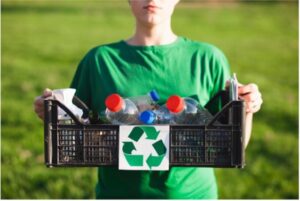
One of the first sustainability requirements mentioned in the PPWR is recyclability. This goal must be achieved in two steps. From 2030 onwards, packaging must be designed to be recyclable. A list of criteria showing when this requirement is met is yet to follow. This may mean, for example, that certain hazardous substances that affect the recycling process and make the recycled material unsafe are no longer allowed in packaging. Five years later, from 2035, packaging should actually be recycled in practice. The abovementioned entry deadlines will shift in case the European Commission does not publish on time its clarifying rules as required under the regulation.
For now, food packaging intended for vulnerable groups (think about persons using medical food and baby food), among others, is exempted. For innovative packaging that cannot meet the recyclability requirements taking into account current collection and recycling methods, a temporary five-year exemption can be applied for at national level.
(2) Percentage of recycled material
Plastic packaging still contains relatively little recycled material. In view of the European circularity targets, minimum percentages are now set for this. Taking into account the limited recycling possibilities and food safety, a lower minimum percentage will apply to food packaging than to non-food packaging (namely 30% and 10% from 2030 for PET and non-PET food packaging respectively, compared to 35% from 2030 for non-food packaging). With regard to single-use plastic beverage bottles, the PPWR will replace the minimum percentage of recycled material set for such in the Single Use Plastics Directive as from 2030 (30% by that year). From 2040, the minimum percentages will be further increased for all categories.
How the percentage of recycled plastic in packaging shall be calculated exactly is still to be defined. In any case, exceptions also apply to this sustainability requirement, especially where food safety may be at stake. Packaging with a plastic part representing less than 5% of the total weight of the whole packaging unit is also exempted from the mandatory minimum percentage.
 (3) Compostable
(3) Compostable
Three years after the PPWR comes into force, certain packaging may only be offered in compostable form. In contrast, other packaging may explicitly not be marketed as such, unless such packaging was subject to national compostability requirements before the date of application of the PPWR. The compostability requirement will initially apply to sticky labels attached to fruit and vegetables, and to packaging like permeable tea bags and coffee pads. Aluminum coffee capsules are thus not covered. Non-permeable coffee capsules made of other material may be accepted for composting at national level.
‘Compostable’ under the PPWR means that the packaging complies with the European standard for industrial composting (13432). However, this standard does not match real life industrial composting and will therefore be updated. Member States may as well require that the packaging complies with the standard for home composting. Needless to say, this is a tougher standard. For the time being, the Netherlands has not indicated its intention to make use of this policy freedom.
Chain responsibility
The responsibility to meet the above sustainability requirements lies primarily with manufacturers. These are the (legal) persons who manufacture packaging or a packaged product, or who have such designed or manufactured under their own name or trademark (save for some exceptions). A food company that manufactures (itself) or has manufactured (by a third party) packaged food products is therefore a manufacturer under the PPWR. Manufacturers will have to carry out a conformity assessment. In doing so, they guarantee and declare under their own responsibility that the packaging complies with the relevant provisions of the PPWR. As part of this, the manufacturer shall draw up a dossier demonstrating compliance.
Food companies importing packaging or packaged products from third countries (importers) will have the responsibility to check whether such packaging complies with the Union rules laid down in the PPWR. Should there be a suspicion that the packaging does not comply with the law, this must be corrected. Importers must in such case also inform the competent authority. To avoid misunderstandings and conflicting interests, it is recommended that food companies make contractual agreements on this with their suppliers and/or customers. This also applies to food companies that further market packaging or packaged products on the Union market (distributors). Distributors should also actively ensure that the packaging meets the labelling requirements under the PWWR. This includes facilitating the correct disposal route and combating ‘greenwashing’.
 PPWR: Dynamic legislation
PPWR: Dynamic legislation
The PPWR is a dynamic legislative document. Several criteria still need to be fleshed out in secondary legislation and the PPWR leaves a lot of room for evaluation, additions and deletions (the latter especially with regard to the exemptions it currently contains). However, sitting still and waiting for more clarity is not recommended since developments are moving fast. Our advice: take stock of the current situation within your company, start talking to your suppliers and customers, and check whether current contracts need to be adjusted. And above all, evaluate which sustainability improvements can be made. Because one thing is certain: the EU needs to step up its efforts to become climate neutral by 2050.
A Dutch version of this blogpost is available at VMT.nl.
All images are by freepik.
Posted: July 25, 2024 | Author: Karin Verzijden | Filed under: Advertising, alternative protein, Authors, Enforcement, Food, Information |
 On 23 July 2024 a Dutch Court ruled in summary relief proceedings that Upfield cannot use the name “roombeter” for a plant-based alternative for butter, as this is in violation of the Regulation establishing a common organization of the markets for agricultural products (“COM Regulation”). You should know that “roombeter” translates in English as a composition of “cream” and “better”, whereas “cream” is a reserved designation under the COM Regulation that can only be used for dairy products. Furthermore, “beter” is close to “boter”, being the Dutch designation for butter.
On 23 July 2024 a Dutch Court ruled in summary relief proceedings that Upfield cannot use the name “roombeter” for a plant-based alternative for butter, as this is in violation of the Regulation establishing a common organization of the markets for agricultural products (“COM Regulation”). You should know that “roombeter” translates in English as a composition of “cream” and “better”, whereas “cream” is a reserved designation under the COM Regulation that can only be used for dairy products. Furthermore, “beter” is close to “boter”, being the Dutch designation for butter.
Facts of the case at hand
In the case at hand, Upfield markets a plant-based alternative for butter under the brand BLUE BAND and the product name ROOMBETER. The packaging of the product furthermore states “100 % plant-based alternative for butter” and “81 % less climate impact than butter”. The packaging itself consists of golden coloured paper that is also used for conventional butter in the Netherlands and it displays a curl of butter as shown below. The Dutch Dairy Association opposed the use of the product name ROOMBETER, as it is considered this a violation of the COM Regulation, as explained below.
Case before Dutch Advertisement Code Committee
Prior to this legal procedure , the Dutch Dairy Association had submitted a complaint regarding this product before the Dutch Advertisement Code Committee. This self-regulatory body ruled on March 21 last that the presentation of the product was misleading, since it could be understood to contain butter. The “e” in “beter” could be confused for an “o”, resulting in “boter”, which is Dutch for butter. And furthermore the golden coloured packaging added to the misleading character of the product. The topic of violation of the COM Regulation was left to civil law proceedings, as it exceeded the competence of the Committee.
Applicable legislation
Article 78.2 of the COM Regulation states that the definitions, designations and sales descriptions provided for in its Annex VII may be used in the Union only for the marketing of a product that conforms to the corresponding requirements laid down in that Annex. Annex VII contains, amongst other things, a product definition for milk and a list of milk products. It furthermore states that these designations may not be used for any other product than milk and milk products. The purpose of this provision is to protect dairy names from being used for non-dairy products.
Tofutown
You may recall that in its Tofutown decision back in 2017, the ECJ formulated a very strict prohibition of the use of diary names for non-dairy products (check out our blog on this case here). As a result of that prohibition, the use of the designation “Tofubutter” for a tofu-based product was in violation of the COM Regulation. As a general rule, the ECJ precluded the term ‘milk’ and the designations reserved by the COM Regulation exclusively for milk products from being used to designate a purely plant based product in marketing or advertising. This even applies if those terms are expanded upon by clarifying or descriptive terms indicating the plant origin of the product at issue
Arguments in favour of ROOMBETER
Upfield had argued it did not market its product under the designation ROOMBETER but under the designation BLUE BAND ROOMBETER. The brand BLUE BAND has been used for more than 100 years for margarine, so it is obvious for the consumer this is a plant-based product This is even strengthened by the Dutch translation of the designations “100 % plant-based alternative for butter” and “81 % less climate impact than butter”. So the name ROOMBETER does not designate, imply or suggest it is about a dairy product.
Court decision
The Court did not eat it. Instead, it very strictly applied the Tofutown doctrine, stating that a reserved designation under the COM Regulation cannot be used for a plant-based product. It went on to explain that if it is prohibited to use the designation “tofubutter” for a plant-based product, as it contains the reserved designation “butter”, for sure it is prohibited to use the designation “roombeter” for a plant-based product, as it contains another reserved designation under the COM Regulation. Also, the element “beter” (“better” in English) can hardly be perceived as a clarifying or descriptive term, as it does not refer (contrary to “tofu”) to a plant-based origin. In fact, its reference to plant-based origins can only be understood by those consumers who know the “skip the cow” ad or who further study the packaging of this product.
Upfield was therefore ordered to stop using the designation ROOMBETER within three months after the date of the legal decision.
Consequences of this decision
Should the conclusion of this decision be that any reference to dairy products should be meticulously avoided when marketing plant-based dairy replacements? This seems a very hard task, as manufacturers of these replacement products will want to indicate how their products can be used. Happily, this is not the case. It is still permitted to mention that your plant-based product is for instance a “yoghurt variation”, as this is perceived as a product explanation rather than a product designation. This is not in violation of the Tofutown doctrine and in line with a 2019 Dutch Supreme Court decision relating to a soy-based product marketed by Alpro. Advertising plant-based dairy alternatives nevertheless remains a delicate balancing act.
Posted: July 23, 2024 | Author: Jasmin Buijs | Filed under: Advertising, alternative protein, Food, Information |
 Claims for formula milk that refer to nature can be understood as a (prohibited) discouragement of breastfeeding, as was recently ruled in two instances by the Dutch Advertising Code Foundation. This case captured our attention, especially with an eye to future possibilities of cell-based breastmilk alternatives.
Claims for formula milk that refer to nature can be understood as a (prohibited) discouragement of breastfeeding, as was recently ruled in two instances by the Dutch Advertising Code Foundation. This case captured our attention, especially with an eye to future possibilities of cell-based breastmilk alternatives.
What is the case about? Advertiser, a food business marketing infant and follow-on formula, published statements on its website about its products such as:
- “Unique combination of natural lactic acid cultures and valuable fibers.”
- “Where organic ends, […] continues: […] guarantees an excellent quality and supersedes the legal requirements concerning organic.”
- “Inspired by nature.”
- “With the first milk that is non mom’s, I want to do all well” (next to a picture of a baby in the arms of a woman).
The question is whether (a) these texts qualify as advertisements, and (b) whether the texts give the impression that the follow-on formula is as good as breastmilk.
What is the legal rule? Consumer-oriented advertising for infant formula is prohibited. Advertisements for follow-on formula are possible, but should not dissuade or discourage breastfeeding. This is laid down in articles 4.1 and 5.2 of the Dutch Advertising Code for Infant Formula, in line with EU Regulation 2016/127. As follows from article 6(6) of aforementioned Regulation, the labelling, presentation and advertising of infant and follow-on formula shall not include terms like ‘humanized’, ‘maternalized’ or ‘adapted’. The Dutch Advertising Code for Infant Formula further lists ‘inspired by breastmilk’, ‘protected effect of breastmilk’, and ‘contains nutrients that are also found in breastmilk’ as examples of prohibited statements to avoid discouragement of breastfeeding.
What was decided? The Board of Appeal upheld the decision of the Advertising Code Committee and ruled that (a) the texts on advertiser’s website are clearly promotional in nature, and that (b) the consumer will understand the references to nature to be references to breastmilk (and not to the products having organic qualities, as was explained by advertiser). As this is in violation of the Dutch Advertising Code for Infant Formula, advertiser is requested to no longer make such advertisements.
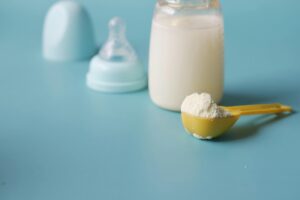 Our analysis and future outlook: It is commonly agreed that breastfeeding, where possible, should be supported. This is one of the principles laid down in the WHO International Code of Marketing of Breast-Milk Substitutes and the subsequent relevant resolutions of the World Health Assembly. We are therefore not surprised by the ruling.
Our analysis and future outlook: It is commonly agreed that breastfeeding, where possible, should be supported. This is one of the principles laid down in the WHO International Code of Marketing of Breast-Milk Substitutes and the subsequent relevant resolutions of the World Health Assembly. We are therefore not surprised by the ruling.
Looking into the future, it is interesting to note that the same rules shall in principle apply to cultivated breastmilk made in a lab. Various companies are already working on this concept such as French Nūmi and BIOMILQ in the US. Giants like Danone and FrieslandCampina have announced strategic partnerships with cell-based human milk component start-ups. Companies working on such substitute products obviously want to (and should) explain their products to the public. Statements such as ‘inspired by breastmilk’ and ‘contains nutrients that are also found in breastmilk’ may not seem unreasonable in this context. Currently this is however not allowed. Will the Dutch self-regulatory code (which is more specific in prohibited terms than EU Regulation 2016/127 and the WHO Code) be updated, so that such innovations can be appropriately explained to the public? Stay tuned – we will keep you posted!
The full case can be read here (in Dutch).
Posted: April 24, 2024 | Author: Jasmin Buijs | Filed under: Advertising, Authors, Food, Food Supplements, Health claims, Information, Nutrition claims |
 The International Probiotics Association Europe (IPA Europe) is calling for harmonized use of the claim ‘probiotics’ in the EU. Aforementioned term is generally considered an unauthorized health claim under the EU Claims Regulation. Nevertheless, an increasing number of EU member states allows the use of this claim under certain conditions. This blogpost dives into the regulatory status of probiotic claims in different EU member states and the latest developments in this area.
The International Probiotics Association Europe (IPA Europe) is calling for harmonized use of the claim ‘probiotics’ in the EU. Aforementioned term is generally considered an unauthorized health claim under the EU Claims Regulation. Nevertheless, an increasing number of EU member states allows the use of this claim under certain conditions. This blogpost dives into the regulatory status of probiotic claims in different EU member states and the latest developments in this area.
When entering the keyword ‘probiotic’ in the EU Health Claims Register, one is confronted with over 100 rejected health claims. Over the past years, this has led to the question whether the term ‘probiotic’ should be allowed under certain conditions, and has resulted into divergent policies in different EU member states. To protect both the food industry (against unfair competition) and the consumer (against misleading information), these divergent policies are reason for IPA Europe to call for a harmonized framework.
Czech Republic, Northern Ireland and France
Although EU member states generally consider ‘probiotics’ to be an unauthorized health claim under the EU Claims Regulation, some EU member states take a different approach. ‘Probiotics’ is for example considered a nutrition claim in the Czech Republic. Such claim is allowed if the conditions set forth in the EU Claims Regulation are met. This means, amongst others, that the good bacteria in question are present in the food in an amount that, according to generally accepted scientific evidence, causes the claimed beneficial effect. By contrast, in France and Northern Ireland, the term ‘probiotics’ can be used as a general, non-specific health claim that is allowed in combination with the authorized health claim “live cultures in yoghurt or fermented milk improve lactose digestion of the product in individuals who have difficulty digesting lactose”.
Italy
Italy takes the view that the term ‘probiotics’ does not meet the definition of a health claim and therefore falls outside the scope of the EU Claims Regulation. Italy supports this view by EFSA’s conclusion that probiotic colonization in the intestinal flora (without further specification of bacterial species or strains) is insufficient evidence to substantiate a beneficial effect on human health. In other words, no link between probiotics and health can be demonstrated, for which reason ‘probiotics’ cannot be considered a health claim. Aforementioned reasoning is however not a free pass to unconditionally use the term ‘probiotics’ in Italy. Instead, the following conditions must be met if and when using this term: (i) safety for human consumption, (ii) a history of use for the benefit of the intestinal flora, and (iii) presence of the relevant bacteria in the food in live form and in an adequate quantity until end of shelf life.
Denmark and Spain
In Denmark, the term ‘probiotics’ can be used based on a different legal ground, namely as a mandatory category designation under the EU Food Supplements Directive. In France, such is also possible. Indeed, Article 6(3)(a) of the EU Food Supplements Directive requires that the labeling of the food supplement shall bear “the names of the categories of nutrients or substances that characterize the product or an indication of the nature of those nutrients or substances”. In Spain, the claim ‘probiotics’ is allowed thanks to the principle of mutual recognition. Based on this principle, a product lawfully marketed in one EU member state must also be accepted on the market of another EU member state. Since probiotic claims are therefore allowed on the Spanish market for products from other EU member states, banning the term ‘probiotics’ at national level would discriminate against national producers. Therefore, both food products produced within Spain and those produced outside of the country can bear the claim ‘probiotics’.
Netherlands
In the Netherlands – just like in Denmark and France – the term ‘probiotics’ can be used as a category designation for food supplements. This Dutch practice is laid down in the Guideline Document on the EU Claims Regulation by the Dutch Health Advertising Knowledge and Advice Council (in Dutch: Keuringsraad). An earlier version of the Nutrition and Health Claims Manual by the Dutch Food Safety Authority (in Dutch: NVWA Handboek Voedings- en Gezondheidsclaims) also explicitly mentioned this possibility. Such is now longer mentioned in the latest version of the Nutrition and Health Claims Manual, which can be explained by the fact that ‘probiotics’ as a category designation for food supplements is not a nutrition or health claim.
Although claims that further elaborate on the health effect of probiotics (sporadically) occur on the Dutch (online) market, these are not allowed. Whether the expression “increases the good bacteria in the intestinal flora” (without using the term ‘probiotics’) is acceptable in the Netherlands, is yet unclear. Yakult uses this expression to advertise its fermented milk drink. The Dutch Health Advertising Knowledge and Advice Council would not allow this expression in the context of its preventive supervision in the context of food supplements, because this expression in effect creates a link between the food product and health. If the NVWA has however a different opinion on this and does consider aforementioned expression possible, then other food businesses can take advantage of this too. The call for harmonized uses of the term ‘probiotics’ by IPA Europe, about which more below, can possibly contribute to the acceptance of such expression at national level.
”Probiotics’ not a health claim”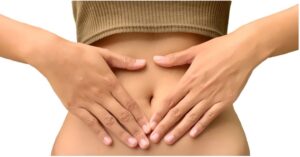
As demonstrated above, various EU member states have introduced national rules on the use of the term ‘probiotics’. As a result, IPA Europe believes that the European Commission’s position that ‘probiotics’ implies a health benefit and is therefore a(n unauthorized) health claim no longer holds water. Instead, IPA Europe advocates qualifying the claim ‘contains probiotics’ as a nutrition claim, just like ‘contains vitamins and minerals’ and ‘contains fiber’. Aforementioned substances may have beneficial nutritional properties, but no specific health benefit is claimed. To strengthen its argument that ‘probiotics’ is not a health claim, IPA Europe explains that the term is not sufficiently precise to substantiate the claimed health benefit under reference to an EFSA guidance document published in 2016.
Call for harmonized use of the term ‘probiotics’
According to IPA Europe, ‘probiotics’ is therefore not a health claim and does not require authorization under the EU Claims Regulation. At the same time, it emphasizes the need for clear rules on the use of the claim as this contributes to a fair competitive environment for food businesses and helps consumers to make informed choices. In December 2023, IPA Europe therefore called for a clearly defined framework for the use of the term ‘probiotics’ in the EU. IPA Europe recommends the following four criteria for consistent use thereof:
- characterization of the species level and identification of at strain level;
- the probiotic strain must be safe for the intended use, e.g. based on the QPS list;
- the probiotic status should be scientifically documented; and
- the probiotic strains must be alive in the product and in a sufficient amount up to the end of shelf-life.
Final comment
The EU knows a fragmented regulatory landscape when it comes to the use of the term ‘probiotics’. Despite IPA Europe’s efforts for a harmonized approach throughout the EU, we will need European legislation or a ruling from the European Court of Justice to have the same rules in all EU member states. For now, the term ‘probiotics’ is (fortunately) not completely banned in the Netherlands and neither in quite a few other EU Member States.
This blogpost has also been published in Dutch at VMT.nl.
Posted: December 1, 2022 | Author: Jasmin Buijs | Filed under: Advertising, Enforcement, Food, Food Supplements, Health claims |
Intro
Food businesses operators that make medical claims for their products in the Netherlands can be fined for doing so under food law. However, they also run the risk of being fined under the Dutch Medicines Act (in Dutch: “Geneesmiddelenwet”), in which case much higher fine amounts apply. The latter sometimes provokes surprise and outrage. Based on three recent rulings, we see a positive trend, which is explained below.
Drug definition
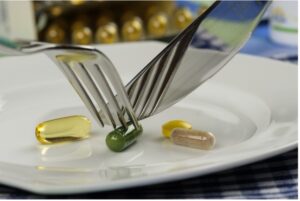 In principle, a medicinal product cannot be sold in the Netherlands without an authorization. Advertising a medicinal product that has not been authorized is prohibited as well. If a product is classified as such and sold without a license, the seller risks a hefty fine.
In principle, a medicinal product cannot be sold in the Netherlands without an authorization. Advertising a medicinal product that has not been authorized is prohibited as well. If a product is classified as such and sold without a license, the seller risks a hefty fine.
The legal definition of the term medicinal product and the corresponding authorization requirement can be found in the Dutch Medicines Act, which is based on the European Directive 2001/83/EC (the “Medicinal Product Directive”). The Medicinal Product Directive provides two criteria for the definition of a medicinal product: qualification by presentation and qualification by function. If a product meets one of these two criteria, it is classified as a medicinal product. The aforementioned criteria are further elaborated in case law.
Qualification by function
A product is a medicinal product by function (see the Hecht-Pharma judgment) if it can be administered to cure or prevent disease, diagnose or otherwise affect a person’s bodily functions. Of particular importance here are the composition and properties of the product, the method of use, the extent of distribution of the product, the consumers’ familiarity with the product and the health risks associated with its use.
Qualification by presentation
When applying the presentation criterion (see the Van Bennekom judgment), consideration is – unsurprisingly – given to whether a product should be regarded as a medicinal product on the basis of its presentation. It is not necessary that the product is expressly indicated or recommended as a medicinal product. The presentation criterion is already met if the manner of presentation gives the average consumer the impression that the product has a medicinal effect. The form in which the product is presented may give an indication for this, especially in the case of tablets, pills and capsules.
In particular the presentation criterion poses a risk to food companies. If they (unintentionally) make a medical claim in respect of their product, the presentation criterion may result in this product being classified (also) as a medicinal product by the Dutch Food and Consumer Product Safety Authority (“NVWA”). In that case, the NVWA may issue a fine under the Dutch Medicines Act. The starting point for such fine is €150,000, which is then differentiated based on the Policy rules of the Dutch Ministry of Health 2019. Even if the product also falls within the legal definition of food, the Dutch Medicines Act may apply simultaneously. The foregoing follows from the so-called hierarchy provision embodied in article 2.2 of the Medicinal Products Directive, which has been implemented into Dutch law as well. On the basis of this hierarchy principle, the Dutch Medicines Act is applicable if there is any doubt about the applicable product category. The result of this provision is that even a seller of coconut oil can receive a fine under the Dutch Medicines Act.
New trend in enforcement of medical claims?
Dutch case law gives numerous examples of products being classified as medicinal products by courts based on (solely) the presentation criterion. Recently, three court rulings have been rendered which give reason to assume that there is a new trend in case law. These are a ruling of the District Court of Oost-Brabant of March 25, 2022, and two (materially identical) rulings of the District Court of The Hague of June 28, 2022, regarding food supplements and follow-on milk, respectively.
The first case concerns the sale of dietary supplements, for which medical claims were made. The NVWA therefore classifies these supplements as medicinal products based on the presentation criterion and imposes two fines under the Dutch Medicines Act (both for sale and for advertising an unregistered medicinal product). The seller’s defense is that the Dutch Medicines Act should be interpreted in accordance with the Medicinal Product Directive and that it follows from there that the contested decision of the NVWA is based on an incorrect legal basis.
 The court agreed with this argumentation, referring to the amendment of the Medicinal Product Directive of 2004. The court deduces from the preamble to the amendment that the Medicinal Product Directive does not apply if there is no doubt that a product clearly exclusively belongs to another product category, such as food or food supplements. The court ruled that this was indeed the case for the specific circumstances that were under discussion. The products clearly fall under the category of food supplements and therefore solely food law applies. The court confirms that the Dutch Medicines Act must, after all, be interpreted in accordance with the Medicinal Product Directive. The court therefore does not proceed testing the medical claims made against the presentation criterion based on drug legislation at all.
The court agreed with this argumentation, referring to the amendment of the Medicinal Product Directive of 2004. The court deduces from the preamble to the amendment that the Medicinal Product Directive does not apply if there is no doubt that a product clearly exclusively belongs to another product category, such as food or food supplements. The court ruled that this was indeed the case for the specific circumstances that were under discussion. The products clearly fall under the category of food supplements and therefore solely food law applies. The court confirms that the Dutch Medicines Act must, after all, be interpreted in accordance with the Medicinal Product Directive. The court therefore does not proceed testing the medical claims made against the presentation criterion based on drug legislation at all.
Clearly food-only
The above ruling raises the question when a product is “clearly exclusively” a food and what aspects of the product are important in this respect. Indications for this can be found in the two recent decisions of the District Court of The Hague regarding specific food products for toddlers, namely follow-on formula. In its assessment of whether the follow-on formula in question could be a medicinal product by presentation, the court determined that such qualification is not obvious with regard to products sold in supermarkets and drugstores. Another factor in this case was that the detailed information about the follow-on formula, on the basis of which the Dutch Ministry of Health (the counterparty in the cases at stake) believed it to be a medicinal product by presentation, could only be found on the seller’s website.
Conclusion
Based on the rulings discussed, we signal a trend that judges are halting the current practice of enforcement of prohibited medical claims for food products based on the Dutch Medicines Act. The discussed rulings make clear that (prohibited) health claims for food supplements and for other food products such as follow-on formula should be assessed on the basis of the Food Information for Consumers Regulation (the “FIC Regulation”), and not via the presentation criterion based on the Dutch Medicines Act. In our opinion this is justified, because since the FIC Regulation became applicable, food law is specifically set up to do so. We are very curious to see whether the trend initiated above will be followed by other courts. Although it follows from a ruling of the District Court of Zeeland-West-Brabant of 21 October, 2022, that this is not yet the case, we trust this will only be a matter of time.
The above does however not mean that food business operators would be allowed to make medical claims for their products. Also, the FIC Regulation contains a ban on medical claims for food products and the Nutrition and Health Claims Regulation sets forth a strict regime for authorized health claims. Having said that, fines following a violation of food legislation are far lower than fines based on the Dutch Medicines Act. On balance, food companies are therefore better off with fines based on food legislation.
This blogpost is written by Max Baltussen, Karin Verzijden and Jasmin Buijs.
The authors want to acknowledge Ebba Hoogenraad and Irene Verheijen for sharing the case law discussed here.
Posted: June 13, 2022 | Author: Jasmin Buijs | Filed under: Advertising, Authors, Food, Information, Nutrition claims |
As part of the EU Farm to Fork Strategy for a sustainable food system under the Green Deal, the European Commission agrees that nudging is necessary to guide the consumer to healthier and more sustainable food choices. This has translated into two impact assessments for mandatory front-of-pack (FOP) labeling. Various EU Member States and individual food business operators are however not waiting for harmonized EU FOP labeling and adopted the nutri-score (guiding health choices) and/or eco-score (guiding sustainability choices). This blogpost shows how these initiatives fit into the current and upcoming legal framework.
Nutri-score
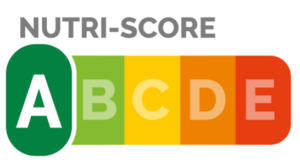 Nutri-score is a five-color nutrition label demonstrating the overall nutritional value of a food product front-of-pack. It allows consumers to compare various foods in a simple and fast way. The label is based on a scale of 5 color and letters, from a dark green “A” for the most healthy choice to a red “E” for the least healthy choice. Simply put, the algorithm behind nutri-score allocates positive points for favorable dietary components (fruits, vegetables, pulses nuts, fibers and proteins) and negative points for energy and unfavorable dietary components (saturated fatty acids, sugars and sodium). The total positive points are subsequently subtracted from the total negative points. The lower the score, the better the letter/color grade.
Nutri-score is a five-color nutrition label demonstrating the overall nutritional value of a food product front-of-pack. It allows consumers to compare various foods in a simple and fast way. The label is based on a scale of 5 color and letters, from a dark green “A” for the most healthy choice to a red “E” for the least healthy choice. Simply put, the algorithm behind nutri-score allocates positive points for favorable dietary components (fruits, vegetables, pulses nuts, fibers and proteins) and negative points for energy and unfavorable dietary components (saturated fatty acids, sugars and sodium). The total positive points are subsequently subtracted from the total negative points. The lower the score, the better the letter/color grade.
Fighting nutrition-related non-communicable diseases
The aim of nutri-score is to nudge the consumer into healthier food choices, and to stimulate the food industry to reformulate their recipes. This way, nutri-score should contribute substantially to a reduced burden of nutrition-related non-communicable diseases such as diabetes, cardiovascular diseases and some types of cancer.
Legal basis
From a legal perspective, nutri-score qualifies as voluntary food labeling in accordance with article 36 FIC Regulation. Food business operators that opt for using nutri-score are however obliged to use it for all foods they place on the market to avoid cherry picking. Moreover, a green “A” or “B” score additionally qualifies as a nutrition claim under the Claims Regulation. Since the claim is not listed in the annex to the Regulation, Member States adopting the nutri-score are subject to the notification procedure of article 23 of the Claims Regulation.
Algorithm changes
Countries that implemented nutri-score (France, Belgium, Luxembourg, Germany and Switzerland) or are willing to use it (Netherlands and Spain) join forces to ensure that nutri-score is in line with the national dietary guidelines. To coordinate such, the abovementioned countries established a Steering Committee and Scientific Committee in February 2021. The Steering Committee is composed of two representatives from national authorities in charge of the nutri-score implementation in each country; the Scientific Committee includes one or two independent experts nominated by each country involved. On March 7 last, the Scientific Committee published its interim report in which it proposes a methodology for modification of the nutri-score algorithm to handle problematic food categories (fats and oils, fish and seafood, whole grain products, salt, sugar, beverages, and dairy products). The Scientific Committee aims at providing a fully revised version of the nutri-score algorithm before the summer. The Steering Committee will have the final say in the recommendations proposed by the Scientific Committee and, where relevant, will elaborate a support document for food business operators to facilitate the appropriation of algorithm changes by the end of the year.
Developments at EU level
In the meantime, the European Commission held a public consultation to introduce standardized mandatory FOP nutrition labeling as part of the revision of the FIC Regulation within the EU’s Farm to Fork strategy. In its impact assessment, it listed five options:
- Baseline (“business as usual”) – it remains possible to voluntarily use a public or private, non-harmonized, FOP label.
- Nutrient- specific labels (numerical) – a harmonized FOP label such as the Italian Nutrinform Battery, providing numerical information on the content of macro nutrients and the energy value of a food, as well as the percentage of the daily refence intake that it makes up for.
- Nutrient-specific labels (color-coded) – a harmonized FOP label such as the UK Multiple Traffic Lights, which is similar to the numerical label but in addition uses colors to classify the content of nutrients as green, amber or red.
- Summary labels (endorsement logos) – a harmonized FOP label such as the Keyhole used in Sweden, which can be applied only to foods that comply with certain beneficial nutritional criteria.
- Summary labels (graded indicators) – a harmonized FOP label such as nutri-score, providing an appreciation of a product’s overall nutritional value through a graded indicator.
The harmonized FOP nutrition label as listed under 2 – 5 above could be either voluntary or mandatory, which is still subject to debate. The impact assessment also mentions the possibility of having a policy mix rather than using one preferred option. Next to the outcome of the public consultation, the European Commission will take into account the comprehensive review on FOP nutrition labeling schemes by the Joint Research Centre (2020) on EFSA’s recent scientific advise on nutrient profiling. A legislative proposal is expected in Q4 2022.
Eco-score
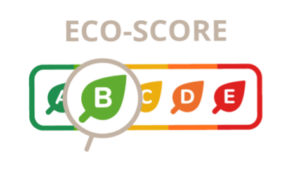 Eco-score can be seen as the equivalent of nutri-score in the field of sustainability. Just like nutri-score, eco-score is a French initiative. It shows the consumer the environmental impact of a food, using the same presentation as nutri-score in terms of colors and letters. The food’s environmental impact is measured in two steps. First, the environmental footprint is calculated using the Product Environmental Footprint (PEF) method, which is based on a Life Cycle Assessment (LCA). The PEF method takes into account 16 different impact categories, such as ozone depletion, land use and climate change. This eventually translates into a score between 0 and 100. Thereafter, bonus points can be added up or minus points can be deduced from this score. These extra points (positive or negative) are based on 4 additional criteria: (1) food production methods as measured through attributed third-party sustainability credentials such as organic certification, fairtrade or MSC, (2) recyclability of the packaging, (3) the provenance of ingredients, and (4) the stay-away from biodiversity-related issues such as overfishing and deforestation. The LCA takes place at product category level; the allocated bonus and minus points are related to the individual product.
Eco-score can be seen as the equivalent of nutri-score in the field of sustainability. Just like nutri-score, eco-score is a French initiative. It shows the consumer the environmental impact of a food, using the same presentation as nutri-score in terms of colors and letters. The food’s environmental impact is measured in two steps. First, the environmental footprint is calculated using the Product Environmental Footprint (PEF) method, which is based on a Life Cycle Assessment (LCA). The PEF method takes into account 16 different impact categories, such as ozone depletion, land use and climate change. This eventually translates into a score between 0 and 100. Thereafter, bonus points can be added up or minus points can be deduced from this score. These extra points (positive or negative) are based on 4 additional criteria: (1) food production methods as measured through attributed third-party sustainability credentials such as organic certification, fairtrade or MSC, (2) recyclability of the packaging, (3) the provenance of ingredients, and (4) the stay-away from biodiversity-related issues such as overfishing and deforestation. The LCA takes place at product category level; the allocated bonus and minus points are related to the individual product.
Legal basis: currently no specific rules
There is not yet a legal framework specifically dedicated to environmental claims, let alone a legal definition thereof. Environmental claims are currently enforced based on general rules, guidelines and self-regulation within the legal framework of unfair commercial practices and misleading advertisements, as discussed in our earlier blogpost. Interestingly, these different sources produce different definitions of environmental claims. The definition thereof in the Dutch Code for Environmental Advertising is for example very broad and includes the eco-score as a claim related to the environmental factors connected with the product. It is however questionable whether an eco-score “C”, “D” or “E” would fall under the definition of a ‘green claim’ under the EC Guidance on the Unfair Commercial Practices Directive. This latter guidance namely refers to a positive environmental impact (which products with lower scores have not) or a lower damaging impact on the environment than competing products. Since the eco-score algorithm is largely based on product categories rather than individual products, it is not necessarily suitable for comparisons between competing products such as for example different fruit juices. Assuming that eco-score does qualify as an environmental claim, the following question is whether it is in conformity with the applicable rules. These rules are however not black and white and leave room for interpretation, especially since the number of enforcement cases is still rather low.
Future situation: EU harmonization of eco-score?
The ambiguity illustrated above may be over with in the near future, since the European Commission is working towards the harmonized use of a sustainability label under its Farm to Fork Strategy and the transition towards a sustainable food system. In its impact assessment, it lists the following options:
- Baseline (“business as usual”) – No specific new actions, though existing initiatives on environmental claims will be continued, such as the upcoming legislation on the substantiating of environmental footprint claims by use of the PEF or OEF (organizational environmental footprint) method.
- Voluntary approaches – No legislative initiatives but guidance and private initiatives such as codes of conducts.
- Reinforcing existing legislation – Development of sustainability labeling provisions related to more than one sustainability component (such as environmental and social sustainability) through existing sector-specific legislation (for example fisheries marketing standards).
- Voluntary EU sustainability label – Development of a voluntary harmonized sustainability label, either applicable to all foods or to foods that meet a certain sustainability standard only.
- Mandatory EU sustainability label – Development of a mandatory harmonized sustainability label, either for all foods placed on the EU market or mandatory for EU produced foods and voluntary for imported foods.
A legislative proposal is expected in Q4 2023. Until July 21 of this year, it is possible to contribute through the public consultation.
Meanwhile in the Member States….
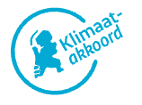 Member States seem not to be waiting for the legislative proposals of the European Commission. Instead, various Member States launched national initiatives on FOP sustainability labels and join forces to ensure that such labels will be implemented in a similar way throughout the EU. Taking the Netherlands as an example, the Ministry of Agriculture, Nature and Food Quality aims to implement a voluntary sustainability label for foods in the Netherlands by 2025. This goal forms part of the National Climate Agreement. Together with the food sector and other stakeholders, the Ministry is currently investigating how such a label for the Dutch market could look like. LCA’s based on the PEF-method are taken as a starting point for further development.
Member States seem not to be waiting for the legislative proposals of the European Commission. Instead, various Member States launched national initiatives on FOP sustainability labels and join forces to ensure that such labels will be implemented in a similar way throughout the EU. Taking the Netherlands as an example, the Ministry of Agriculture, Nature and Food Quality aims to implement a voluntary sustainability label for foods in the Netherlands by 2025. This goal forms part of the National Climate Agreement. Together with the food sector and other stakeholders, the Ministry is currently investigating how such a label for the Dutch market could look like. LCA’s based on the PEF-method are taken as a starting point for further development.
Conclusion
FOP labeling is a topic of conversation. Various initiatives on both national and European level are taking place simultaneously, in the hope that they will once come together as an EU harmonized label. We see different food businesses reacting to this situation differently. Where some opt for awaiting formal decisions at national level and instructions by the government, others are pioneering and experimenting with FOP labeling within the currently existing legal framework. Examples include the nutri-score pilot by Iglo and the full-fledged use of eco-score by Colruyt Group in Belgium. What about you? Are you a game changer or a laggerd?
Together with Lisa Gray from Iglo and Veerle Poppe from Colruyt Group, Jasmin Buijs presented this topic at the VMT Food Law Event on June 7 last.
Posted: April 22, 2022 | Author: Jasmin Buijs | Filed under: Advertising, Authors, Food |
 Many companies wonder what kind of environmental claim they can make for their product or packaging. Although there is no specific legal framework for this (yet), environmental claims fall under the general prohibition on misleading practices. Thanks to various developments at the European level, the legal framework for environmental claims is shaping up. Below is an update of the latest developments.
Many companies wonder what kind of environmental claim they can make for their product or packaging. Although there is no specific legal framework for this (yet), environmental claims fall under the general prohibition on misleading practices. Thanks to various developments at the European level, the legal framework for environmental claims is shaping up. Below is an update of the latest developments.
New guidance on the Unfair Commercial Practices Regulation
At the end of last year, the European Commission published an update of its guidance on the Unfair Commercial Practices Directive (“Revised Guidance”). The guidance provides amongst others an interpretation of the general prohibition on misleading practices in the aforementioned directive. Although the guidance has no legal status, it concerns an authoritative document. Judges and regulators such as the Netherlands Authority for Consumers and Markets (ACM) regularly refer to it. With regard to environmental claims, the Revised Guidance continues the line as set forth in its previous version from 2016. At certain points the text has been more detailed and more extensive examples are provided. However, the Revised Guidance also highlights a number of new points. The most striking additions are as follows.
Use of logos and labels
Environmental claims must be presented in a clear, specific, accurate and unambiguous manner. Simply placing a logo on a packaging will generally be insufficient to meet the above requirements since the average consumer cannot be expected to be familiar with the meaning thereof. This is not surprising considering that there are more than 100 sustainability logos in the EU. To prevent misleading practices, the Revised Guidance prescribes informing the consumer on the meaning of the logo, whether certification is done by a third party or not, and where further information can be found. These requirements are not absolutely new since they can also be found in the Guidelines sustainability claims issued by the ACM and the Code for Environmental Advertising by the Dutch self-regulatory organization of advertising (of which an update is expected this year). What is more is that the Revised Guidance sets forth additional requirements in case private instead of public quality marks are being used. The European Commission therefore seems to hint at a preference for public quality marks (e.g. EU Ecolabel, the Nordic Ecolabel ‘the Swan’ or the German ‘Blue Angel’) over private quality marks and to aim at a reduction of the total number of such marks. In this context, the ACM calls upon companies to use existing quality marks instead of developing their own.
Use asterisk for reference to additional information
It follows from the above that environmental claims (including logos) sometimes need further explanation to be well understood by the consumer. This is especially the case for general terms such as “sustainable” and “good for the environment”. A clarifying text should be placed as close as possible to the general claim, preferably right next to it. Another place may be chosen if there is no room for this, such as on the back of the packaging on which the claim is presented. An asterisk can be used to make the connection between the main claim and the additional information. A similar suggestion is made in the ACM Guidelines sustainability claims. The Revised Guidance states that when there is no room to specify the environmental claim, the claim should in principle be omitted.
Sharing information with competent authorities, but not with consumers
Environmental claims should be based on evidence that can be verified by the competent authorities. Authorities requesting such evidence are expected to take into account confidential information of the company making the environmental claim (such as certain input data for an LCA). The Revised Guidance emphasizes that the Unfair Commercial Practices Directive does not contain an obligation to provide such evidence to consumers (upon request). The ACM however takes a different position on this matter in its Guidelines sustainability claims, referring to the Guidelines for Making and Assessing Environmental Claims (2000) of the European Commission. The ACM advises placing evidence that substantiates the claim on a website and referring to it on (the packaging of) the product concerned. It also states that consumers should be provided with more information about the evidence concerned upon request. This raises the question how to deal with confidential information. A practical solution is to remove confidential information (provided this does not render the information concerned practically illegible), or to make a summary of the evidence for the claim available as a ‘consumer version’.
Completed public consultation on bio-plastics
Bio-plastics are a hot topic these days. These include ‘bio-based’, ‘biodegradable’ and ‘compostable’ plastics. Where bio-degradable plastics degrade and eventually dissolve due to changes in their chemical structure, the idea behind compostability is that a soil improver remains after the composting process. In contrast, bio-based plastics are plastics made from components derived from natural materials (as opposed to fossil-based materials). Bio-based plastics are not necessarily biodegradable or compostable. The EU is investigating the following policy areas with regard to bio-plastics.
Sustainability of natural materials vs. fossil resources
Plastics based on natural materials are often advertised as being more sustainable than fossil-based plastics. The question is, however, whether such natural materials offer real environmental benefits beyond a reduction in the use of fossil resources. To measure those benefits, the environmental impact of the full life cycle of such materials needs to be considered. This includes amongst other things the origin of the raw materials used. The use of arable land to grow natural materials for bio-plastics while this land could have been used for food is for example not necessarily ‘sustainable’.
Effective biodegradability and its role in a circular economy
 As far as biodegradability is concerned, it is being investigated whether and how plastics with this property fit into a circular economy. After all, there is little ‘circular’ about products that ‘dissolve’ in nature; reuse and recycling may offer better alternatives. It may at the same time be useful for certain product groups if they break down under specific conditions. An example of this could be agricultural film, which is not always removed completely after harvest and which is not easy to recycle after use due to contamination with soil. Similar questions arise with regard to compostable plastics. At best they break down into water and CO2, and therefore cannot contribute to soil improvement. Biodegradation of so-called compostable plastics could however also be useful for certain product groups. Think for example of compostable coffee and tea bags, which create a co-benefit when their use results into more coffee and tea being disposed in the green bin and subsequently composted.
As far as biodegradability is concerned, it is being investigated whether and how plastics with this property fit into a circular economy. After all, there is little ‘circular’ about products that ‘dissolve’ in nature; reuse and recycling may offer better alternatives. It may at the same time be useful for certain product groups if they break down under specific conditions. An example of this could be agricultural film, which is not always removed completely after harvest and which is not easy to recycle after use due to contamination with soil. Similar questions arise with regard to compostable plastics. At best they break down into water and CO2, and therefore cannot contribute to soil improvement. Biodegradation of so-called compostable plastics could however also be useful for certain product groups. Think for example of compostable coffee and tea bags, which create a co-benefit when their use results into more coffee and tea being disposed in the green bin and subsequently composted.
Misleading practices
 The prevention of misleading practices is also on the agenda. The European Commission recognizes that there is currently much confusion among consumers about bio-plastics. Stricter rules for the use of this and similar terms can prevent greenwashing. Moreover, it must be prevented that consumers interpret a biodegradability claim as a license to litter packaging with this characteristic.
The prevention of misleading practices is also on the agenda. The European Commission recognizes that there is currently much confusion among consumers about bio-plastics. Stricter rules for the use of this and similar terms can prevent greenwashing. Moreover, it must be prevented that consumers interpret a biodegradability claim as a license to litter packaging with this characteristic.
From 18 January to 15 March 2022, a public consultation took place at European level concerning the policy framework currently being under construction. Publication of the policy framework is planned for this summer.
European policy framework PEF and OEF
Environmental footprint claims, just like other environmental claims, need to be supported by evidence. There is however no harmonized method for substantiating such claims. Having said that, EU standard methods for the ecological footprint of products (PEF) or organizations (OEF) do exist since 2013. These methods focus on the measurement of the environmental performance of a product or organization over its entire life cycle using 16 environmental impact categories, including climate change, ozone depletion and water use. The European Commission is currently exploring the possibilities of putting more emphasis on the use of the abovementioned methods for the substantiation of environmental claims. The outcome of this study was planned for the first quarter of this year, but is still pending.
Ecodesign
There is even more happening in the field of sustainability in Brussels. On 30 March of this year, the European Commission adopted a proposal for a revised directive establishing rules for sustainable products (“Revised Ecodesign Directive”). Sustainable products will become the norm, with reusability, recyclability and energy efficiency being key concepts.
Food products are excluded from this European proposal on sustainable products. It is also unlikely that the Revised Ecodesign Directive will set specific rules for packaging materials meant for food contact. The rules to be established for packaging materials will namely be introduced via product-oriented requirements for products that do fall under the Revised Ecodesign Directive. This initiative nevertheless does mark a spot on the European sustainability horizon, which will also determine the direction for sustainability rules on packaging materials for foodstuffs.
Conclusion
Environmental claims are a topic of attention at national and European level. Food and food packaging businesses that make or wish to make environmental claims are therefore advised to keep an eye on current developments. Stay tuned!
Posted: January 26, 2022 | Author: Karin Verzijden | Filed under: Advertising, Authors, Food |
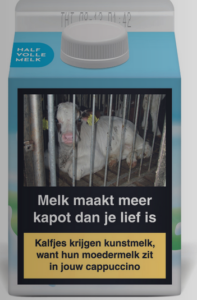 How to strike the right balance between freedom of speech and preventing unfair advertising targeting the dairy industry? This is the object of a Q4 2021 decision of the Appeal Board of the Dutch Advertising Code Committee, consisting of an advertising campaign on bus shelters in the Netherlands and a website campaign. If you are interested to know how broad the scope of “advertising” is and how a rather aggressive campaign was evaluated, continue reading. This post will be limited to the bus shelter campaign only since that already demonstrates the operation of the applicable legal framework.
How to strike the right balance between freedom of speech and preventing unfair advertising targeting the dairy industry? This is the object of a Q4 2021 decision of the Appeal Board of the Dutch Advertising Code Committee, consisting of an advertising campaign on bus shelters in the Netherlands and a website campaign. If you are interested to know how broad the scope of “advertising” is and how a rather aggressive campaign was evaluated, continue reading. This post will be limited to the bus shelter campaign only since that already demonstrates the operation of the applicable legal framework.
Bus shelter campaign attacking dairy industry
The bus shelter campaign showed several very explicit pictures demonstrating the misery life of young calves. Under the title “Do you need help quitting?” information was provided on the consequences of the dairy industry for these calves. The text on the various posters in the bus shelters stated the question “Do you need help quitting?”, followed by the following texts:
- Poster 1: “ “Dairy causes serious animal suffering. Calves are taken away from their mothers immediately after birth.”
- Poster 2: “Dairy is deadly. On a yearly basis, 1.5 million calves are slaughtered for dairy”.
- Poster 3: “Milk destroys more than you like. Calves are being fed artificial milk because the cow’s milk ended up in your cappuccino.”
The wording used above appeals to two well-known anti-smoking and anti-alcohol campaigns in the Netherlands, notably “quit smoking” and “alcohol destroys more than you like (your marriage for example).” The driver behind the anti-diary campaign is the Dutch organisation Animal & Law (“Dier & Recht”) that claims to be voice of the animals. This campaign was opposed by the Dutch dairy organization DairyNL (“ZuivelNL”), that aims to strengthen the Dutch dairy chain in a way that respects the environment and society. DairyNL considered this campaign misleading and therefore unfair.
Scope of the Dutch Advertising Code
The Netherlands knows a system of a self-regulation for advertising, embodied in the Dutch Advertising Code. Companies and other organisations can choose to submit to this system and the outcome (so-called recommendations) of cases based on complaints by whoever considers an advertisement misleading has a high degree of compliance (97 % in 2020). Animal & Law argued that their campaign was out of scope, as it did not envisage selling any products or services. Instead, it alleged to be a non-profit organisation that by public campaigns aims to improve the (legal) position of animals. Alternatively, it argued that if their campaign was captured by the scope of the Dutch Advertising Code, it would benefit from the principle of freedom of expression, as protected by the European Convention on Human Rights. Animal & Law overlooked however that the Dutch Advertising Code also captures ideas that are systematically recommended by an advertiser. The anti-dairy campaign by Animal & Law was found to meet this test. The Advertising Code Committee (“Reclame Code Commissie”) subsequently assessed for each bus shelter poster whether the information constituted misleading advertising.
Test for misleading advertising
The test applied is as follows: Advertising is unfair if it contravenes with standards of professional conduct and if it substantially disrupts or may disrupt the economic behaviour of the average consumer. One could consider this is exactly what Animal & Law was after and for a good cause. Under the Dutch Advertising Code however, aggressive advertising is at any rate considered unfair. Furthermore, all advertising containing incorrect or ambiguous information regarding specific aspects of the product at stake is considered misleading, if such information entices or may entice the average consumer to take a transaction decision (including refraining therefrom) that such consumer otherwise would not have made.
Poster 1
Just below the text “Do you need help quitting?” a milk carton is shown depicting a young calf being led away in a wheelbarrow followed by the text “Dairy causes serious animal suffering. Calves are taken away from their mothers immediately after birth.” All of this is depicted within a black framework, just like the health warning on a box of cigarettes. DairyNL argued, amongst other things, that according to the Netherlands Nutrition Centre, the consumption of dairy fits into a healthy diet, whereas the reference to quitting creates the impression dairy is very bad for human health. During the hearing, Animal & Law acknowledged that it is incorrect to state in general that dairy is not healthy. The Advertising Code Committee therefore considered the information re the quitting provided on poster 1 to be ambiguous and thus misleading. This results in unfair advertising.
Poster 2
This poster shows the same setting as poster 1, namely a milk carton depicting an earmarked calf surrounded by a black framework. According to DairyNL, in this context the text “Dairy is deadly. On a yearly basis, 1.5 million calves are slaughtered for dairy” can only be understood as a health warning. Furthermore, the absolute claim on the number of slaughtered calves creates the impression that this slaughter can only be attributed to the dairy industry, whereas it also serves meat production. Animal & Law had responded that calves are merely a by-product of dairy. It had used the warning that “dairy is deadly” to awaken the conscience of consumer. Obviously, the consumer understands the calf is going to die, not the consumer. The Advertising Code Committee considered this warning to be misleading, for the same reason as mentioned above. This part of the advertising was therefore considered unfair. The complaint regarding the slaughter was strikingly not addressed. I deduce therefrom that at any rate it was not concurred with.
Poster 3
On this poster, a calf is shown behind the bars of its small cage. DairyNL argued the setting of this poster (identical as described above) and the text “Milk destroys more than you like” links milk to two health hazard products, i.e. cigarettes and alcohol. DairyNL also argued that the claim “Calves are being fed artificial milk because the cow’s milk ended up in your cappuccino” creates the impression calves only drink artificial milk. Animal & Law refuted this complaint by explaining the claim does not state that calves only drink artificial milk. Animal & Law did not deny calves are being fed colostrum right after birth. However, this only takes 2 days, whereas the natural weaning period of calves amounts to 6 – 12 months. Here the Advertising Code Committee did not consider DairyNL’s claim founded, as DairyNL did not dispute that after a few days, the calves are being fed artificial milk instead of cow’s milk.
Conclusion
So what is the result of all this and what can we learn from this advertising decision? If the campaign of Animal & Law was mainly after shock and awe, it certainly succeeded. The pictures of the calves shown in the context of health warnings for cigarettes did not miss their effect. Potentially, a number of consumers became aware of certain facts it did not realise before. But will these consumers say a definite no to dairy? That’s the question, as the campaign may also have a counterproductive effect. Personally, I expect the chances of a seductive dairy alternative much higher for inducing consumers to eat no more (or just less) dairy. The learning from this decision is that even if the freedom of expression is a major public good, it also has its limits. No purpose justifies providing incorrect or ambiguous information. This learning applies equally to those outlining the pro’s of dairy alternatives, but certainly also to those emphasizing the con’s of dairy.
 Claims for formula milk that refer to nature can be understood as a (prohibited) discouragement of breastfeeding, as was recently ruled in two instances by the Dutch Advertising Code Foundation. This case captured our attention, especially with an eye to future possibilities of cell-based breastmilk alternatives.
Claims for formula milk that refer to nature can be understood as a (prohibited) discouragement of breastfeeding, as was recently ruled in two instances by the Dutch Advertising Code Foundation. This case captured our attention, especially with an eye to future possibilities of cell-based breastmilk alternatives. Our analysis and future outlook: It is commonly agreed that breastfeeding, where possible, should be supported. This is one of the principles laid down in the WHO International Code of Marketing of Breast-Milk Substitutes and the subsequent relevant resolutions of the World Health Assembly. We are therefore not surprised by the ruling.
Our analysis and future outlook: It is commonly agreed that breastfeeding, where possible, should be supported. This is one of the principles laid down in the WHO International Code of Marketing of Breast-Milk Substitutes and the subsequent relevant resolutions of the World Health Assembly. We are therefore not surprised by the ruling. In principle, a medicinal product cannot be sold in the Netherlands without an authorization. Advertising a medicinal product that has not been authorized is prohibited as well. If a product is classified as such and sold without a license, the seller risks a hefty fine.
In principle, a medicinal product cannot be sold in the Netherlands without an authorization. Advertising a medicinal product that has not been authorized is prohibited as well. If a product is classified as such and sold without a license, the seller risks a hefty fine. The court agreed with this argumentation, referring to the amendment of the Medicinal Product Directive of 2004. The court deduces from the preamble to the amendment that the Medicinal Product Directive does not apply if there is no doubt that a product clearly exclusively belongs to another product category, such as food or food supplements. The court ruled that this was indeed the case for the specific circumstances that were under discussion. The products clearly fall under the category of food supplements and therefore solely food law applies. The court confirms that the Dutch Medicines Act must, after all, be interpreted in accordance with the Medicinal Product Directive. The court therefore does not proceed testing the medical claims made against the presentation criterion based on drug legislation at all.
The court agreed with this argumentation, referring to the amendment of the Medicinal Product Directive of 2004. The court deduces from the preamble to the amendment that the Medicinal Product Directive does not apply if there is no doubt that a product clearly exclusively belongs to another product category, such as food or food supplements. The court ruled that this was indeed the case for the specific circumstances that were under discussion. The products clearly fall under the category of food supplements and therefore solely food law applies. The court confirms that the Dutch Medicines Act must, after all, be interpreted in accordance with the Medicinal Product Directive. The court therefore does not proceed testing the medical claims made against the presentation criterion based on drug legislation at all.














